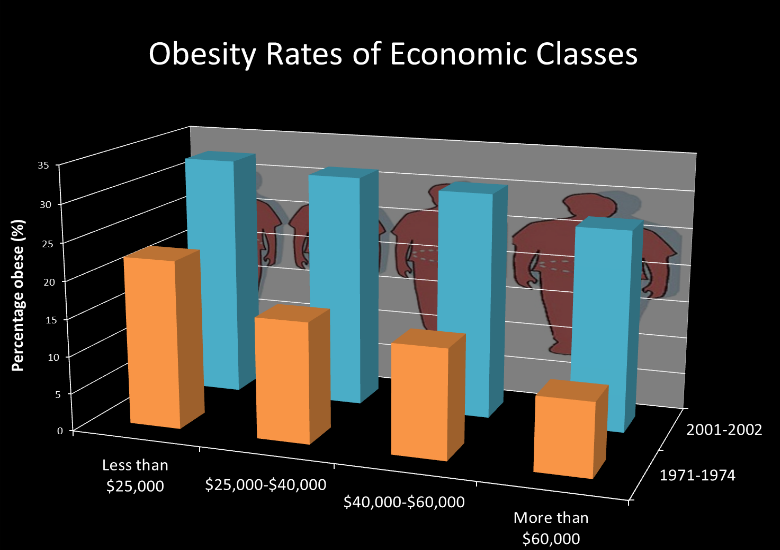The Trust for America’s Health and the Robert Wood Johnson Foundation has released a new report on the state of overweight and obesity in Americans, broken down by state, ethnic group, sex, age, physical activity eating habits and more. And the implications for both the U.S. population and healthcare system are not exactly ideal.
First, though, let’s take a quick look some of the key national statistics that came out of the extensive report:
- The states with the highest obesity rates are all in the South and Midwest regions. West Virginia had the highest obesity rate at 35.1%. Northeastern and Western states had lower obesity rates. Colorado’s 21.3% obesity rate just beat out Hawaii, which came in at 21.8%.
- Older Americans are more prone to obesity: Baby boomers (adults aged 45 to 64 years old) are more likely to be obese than any other age group. However, that doesn’t mean that teen and childhood obesity statistics are promising.
- Among high school students nationwide, 13.7% are obese, with 9 of the 10 highest obesity rates occurring in the South. Kentucky has the highest obesity rate for high school students, with 18%.
- Seven of the 10 states with the highest rates of obese children are in the South. Seven of the states with the lowest rates of obese 10- to 17-year-olds are in the Western states. Mississippi tops the table for adolescent obesity, at 21.7%. When the age range is expanded in this way, Kentucky falls to eighth, with an adolescent obesity rate of 19.7%
- Obesity rates for blacks exceed 40% in 11 states and 30% in 41 states; for Latinos, obesity rates are higher than 30%; but for whites, just 10 states have obesity rates greater than 30%.
- More than 33% of adults who earn less than $15,000 a year are obese, while the rate is just 25% for those earning over $50,000 annually.
The Washington Post further points out the swift and overwhelming spread of obesity in the United States, reporting that, in 1990, no states “had an obesity rate above 15 percent, but by 2000, only two, Arizona and Colorado, had obesity rates below 15 percent, and by 2010, not a single state had an obesity rate below 20 percent.” However, the paper notes that obesity has “levelled off” at just over 35% nationally.
So what does all this mean for the U.S. healthcare system in the present and future? Well, for one, the rise in obesity has coincided with a spike in type 2 diabetes and hypertension. Diabetes rates have nearly doubled the past 20 years — from 5.5% (1988–94) to 9.3% (2005–2010) — and the CDC projects that one-third of Americans could have diabetes by 2050. More than 80% of people with diabetes are overweight or obese. Alabama leads the 10 states with the highest rates of type 2 diabetes (are in the South) at 13.8%. Roughly 3 of every 10 cases of hypertension may be caused by obesity, according to the new report, and West Virginia had the highest rate of hypotension at 41%. The other 9 states with the highest rates of hypertension are also in the South.
These conditions are long-term and chronic, and potentially a huge drain on the healthcare system. In fact, obesity and related illnesses cost the U.S. health system at least $150 billion a year, and may double within the next 4 years, according to a recent report by the McKinsey Global Institute. The report stresses that there’s no one solution to the issue of obesity, and instead recommends a holistic approach that tackles the problem from a variety of angles and at numerous points inside and outside the healthcare system.
“The evidence suggests that the economic and societal impact of obesity is deep and lasting,” writes the MicKinsey Global Institute. “It may entrench social inequalities between generations … even if the current rise in prevalence can be reversed, the damaging health implications and economic costs the world is experiencing today could persist well into the future. A systemic, sustained portfolio of initiatives, delivered at scale, is needed to reverse the health burden.”



